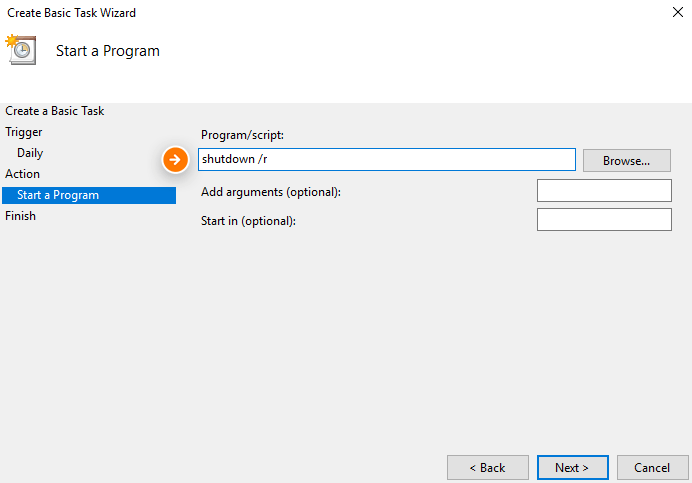You will learn how to schedule your computer to reboot at a certain time using the task scheduler. This can be a one-time reboot or a recurring reboot. So these are the steps.
STEP 1
Press win + r to get the run box. Then type taskschd.msc and press enter
STEP 2
This will launch Task Scheduler. Right-click on the Task Scheduler Library and select New Folder.
Name the new folder as Schedule Reboot or anything you like and click OK.
STEP 3
Expand Task Scheduler Library and select the Schedule Reboot folder. Then right-click on it and select Create Basic Task.
When you select Create Basic Task, it will open a wizard. Name it Reboot and click Next.
The Trigger section lets you decide when your task needs to be run. You can schedule reboot daily, one time, weekly, etc. Select daily and click next.
Specify the time at which you want to run the reboot and click Next.
In the Action section, select Start a program and click Next.
Type shutdown /r in program/script field and click Next.
Windows may prompt a message box asking for permission. Click yes.
Click Finish to complete the task.
That’s it.












Comments
Post a Comment